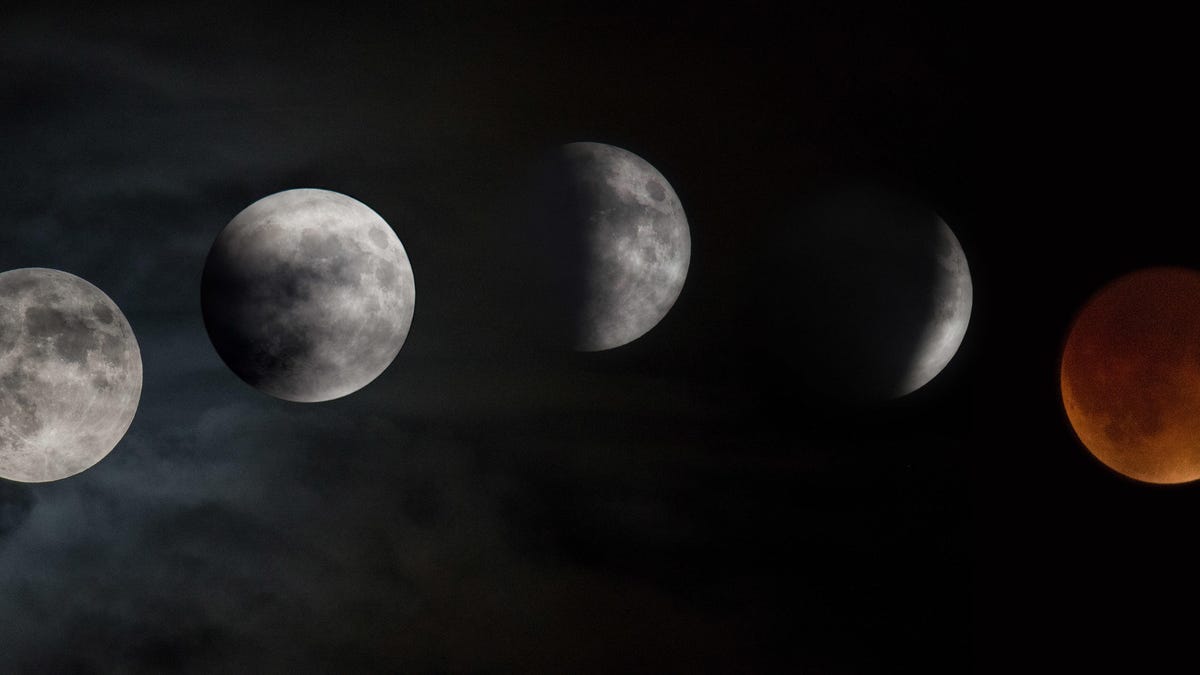How to See a 'Blood Moon' Total Lunar Eclipse Turn the Moon Red Today
The moon will blush as Earth's shadow drapes over it.

NASA caught sight of a supermoon lunar eclipse on Sept. 27, 2015.
Get ready for a celestial show as a total lunar eclipse appears on Sunday night and early Monday morning. This one's evocatively known as a "blood moon" for the way the moon turns a subtle shade of red during the event. The eclipse will be visible across a good span of the globe.
The May full moon is sometimes nicknamed the flower moon for coinciding with spring in North America, so feel free to call this a "flower blood moon" or "blood flower moon" for extra pizzazz.
What's a lunar eclipse?
A lunar eclipse occurs when the Earth gets between the sun and the moon and drapes its planetary shadow across our natural satellite. A total lunar eclipse happens when the sun, Earth and moon line up just right for our planet's shadow to fully cover the moon. That's when it usually turns a dusky red.
Check out more about eclipses, and how to safely view them, in our guide. Lunar eclipses are fine to view with the naked eye.
Check your place and time
The eclipse won't be visible everywhere across the globe, so you'll need a combination of the right place, time and weather to witness it in person. Most of the Americas, Europe and Africa will be able to catch some of the action. NASA's visibility map highlights the best viewing locations.
A viewing area map highlights where the May 2022 lunar eclipse can be spotted.
You can pin down your local time by visiting Timeanddate's eclipse page. For example, the time of maximum eclipse will come around 10 p.m. local time on Sunday, May 15 for me in New Mexico, so I'll want to be sure to be outside to catch the view around then.
Watch a lunar eclipse livestream
Don't let location or clouds get in the way of your lunar festivities. The broad viewing area for the eclipse means there should be a bounty of livestreams. NASA and Timeandate.com are on the case for starters. I'll add more notable livestream options as they become available.
NASA TV is scheduled to start live coverage at 8 p.m. PT on Sunday, May 15.
Timeanddate's coverage will kick off at 7 p.m. PT.
The Virtual Telescope Project is bringing in a team of astrophotographers to join astrophysicist and host Gianluca Masi for a stream starting at 7:15 p.m. PT on Sunday.
A lunar eclipse can be a subtle and sublime experience as the moon is gently shaded before blushing with a tinge of red. Here's hoping for clear skies and a beautiful night for moon watching.

